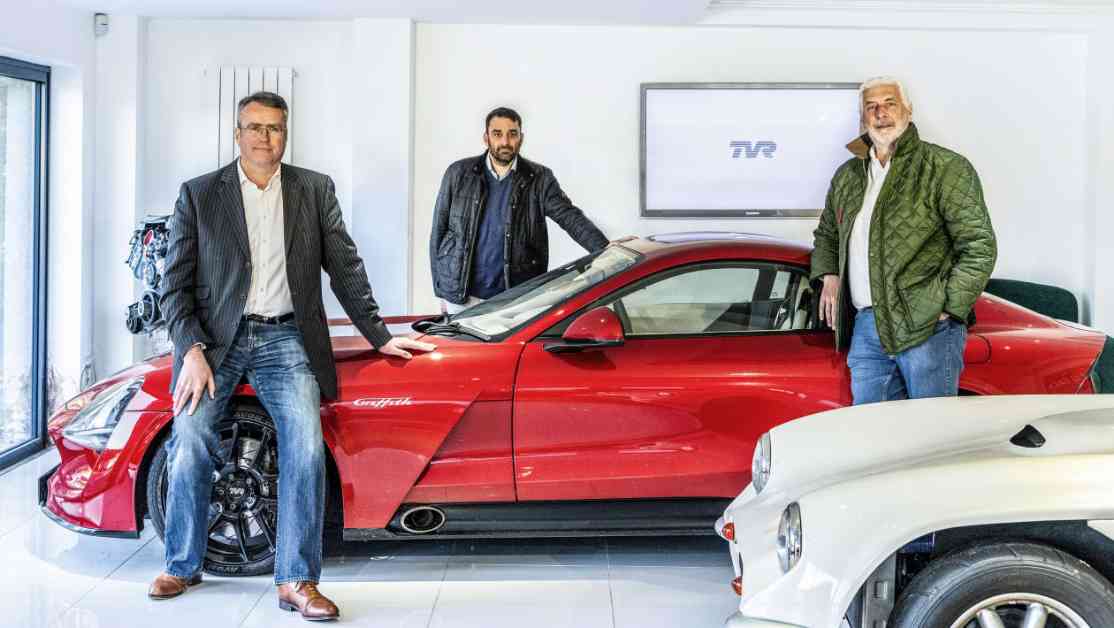TVR’s ambitious plans to produce its highly anticipated Griffith sports car have hit a major roadblock, causing significant consequences for both the company and the Welsh government. The failure of the government-backed factory project in Ebbw Vale has not only left TVR in a precarious position but has also put millions of pounds of public funds at risk.
The Rise and Fall of TVR’s Griffith Project
TVR’s Griffith sports car, unveiled six years ago, was set to revolutionize the sports car market with its V8 engine, sleek design, and innovative technology. However, despite high expectations, the Griffith has yet to hit the road, leading to a series of setbacks for the British automaker. Last year, TVR lost exclusive rights to the Ebbw Vale factory where the Griffith was supposed to be built, signaling a major setback for the company’s production plans.
The Welsh government had invested heavily in the Ebbw Vale facility, spending £4.75 million to purchase the site and an additional £7.6 million on refurbishments. With TVR pulling out of the project, efforts to find a replacement tenant for the factory have proven fruitless, putting taxpayers’ funds at risk. The potential loss of millions of pounds highlights the significant financial implications of TVR’s failed factory project in Wales.
Challenges and Uncertainties Facing TVR
Les Edgar, who took over leadership of TVR in 2013, had ambitious plans for the Griffith sports car, positioning it as a competitor to the likes of Porsche and Aston Martin. The Griffith was designed with cutting-edge technology, including Gordon Murray’s iStream chassis construction and a powerful 5-litre Ford V8 engine. Despite its promising specifications, TVR faced challenges securing the necessary funding to bring the Griffith to production.
The Welsh government’s purchase of the Ebbw Vale facility was intended to provide TVR with a state-of-the-art production site. However, delays and setbacks in the refurbishment process hindered the project, making it less appealing to potential investors. The expiration of TVR’s exclusive rights to the factory further complicated the company’s plans, casting doubts on the future of the Griffith sports car.
Additionally, the sale of Gordon Murray Technologies to CYVN Holdings raised concerns about TVR’s access to the iStream technology crucial for the Griffith’s production. With uncertainties surrounding the use of this technology and the shifting landscape of the automotive industry, TVR’s path forward remains uncertain.
TVR’s Shift to Thruxton Circuit
In response to the challenges faced at the Ebbw Vale facility, TVR announced the establishment of a new development center at Thruxton Circuit in Hampshire. This move marks a significant shift for the company, as it seeks to regroup and redefine its production strategy. While the Thruxton site will replace TVR’s current facilities in Surrey, the timeline for the transition remains unclear.
The decision to relocate to Thruxton represents a strategic pivot for TVR, as it aims to realign its production plans and overcome the setbacks experienced at the Ebbw Vale factory. However, the shift raises questions about the company’s ability to deliver on its promises and bring the Griffith sports car to market in a timely manner.
As TVR navigates the challenges of transitioning to a new production facility and adapting to changes in the automotive industry, the future of the Griffith sports car hangs in the balance. The company’s ability to secure funding, access key technologies, and execute its production plans will be critical in determining its success moving forward.
In conclusion, the costly consequences of TVR’s failed factory project in Wales have highlighted the risks and challenges faced by automotive manufacturers in bringing new vehicles to market. The impact of the project’s failure extends beyond the company itself, affecting taxpayers and raising broader questions about the viability of ambitious automotive ventures. As TVR continues its journey to bring the Griffith sports car to life, the road ahead remains uncertain, with significant hurdles to overcome in order to realize its vision.










